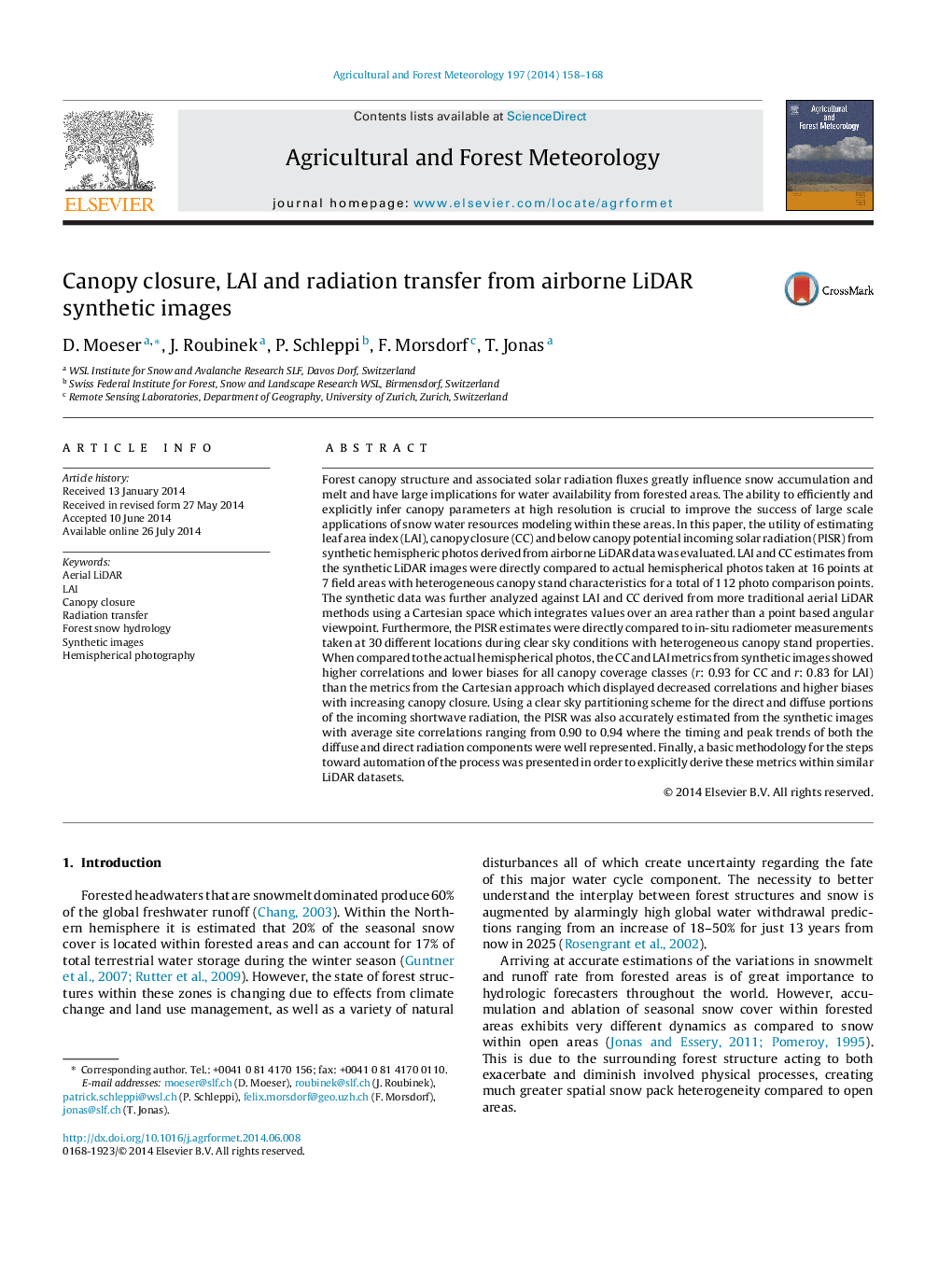| Article ID | Journal | Published Year | Pages | File Type |
|---|---|---|---|---|
| 81712 | Agricultural and Forest Meteorology | 2014 | 11 Pages |
•LAI, forest canopy closure and solar radiation were estimated from aerial LiDAR data.•ALS data was converted to mimic hemispherical photos.•Canopy metrics from mimicked and real hemispherical images were highly correlated.•This new approach showed higher correlations than traditional methods.
Forest canopy structure and associated solar radiation fluxes greatly influence snow accumulation and melt and have large implications for water availability from forested areas. The ability to efficiently and explicitly infer canopy parameters at high resolution is crucial to improve the success of large scale applications of snow water resources modeling within these areas. In this paper, the utility of estimating leaf area index (LAI), canopy closure (CC) and below canopy potential incoming solar radiation (PISR) from synthetic hemispheric photos derived from airborne LiDAR data was evaluated. LAI and CC estimates from the synthetic LiDAR images were directly compared to actual hemispherical photos taken at 16 points at 7 field areas with heterogeneous canopy stand characteristics for a total of 112 photo comparison points. The synthetic data was further analyzed against LAI and CC derived from more traditional aerial LiDAR methods using a Cartesian space which integrates values over an area rather than a point based angular viewpoint. Furthermore, the PISR estimates were directly compared to in-situ radiometer measurements taken at 30 different locations during clear sky conditions with heterogeneous canopy stand properties. When compared to the actual hemispherical photos, the CC and LAI metrics from synthetic images showed higher correlations and lower biases for all canopy coverage classes (r: 0.93 for CC and r: 0.83 for LAI) than the metrics from the Cartesian approach which displayed decreased correlations and higher biases with increasing canopy closure. Using a clear sky partitioning scheme for the direct and diffuse portions of the incoming shortwave radiation, the PISR was also accurately estimated from the synthetic images with average site correlations ranging from 0.90 to 0.94 where the timing and peak trends of both the diffuse and direct radiation components were well represented. Finally, a basic methodology for the steps toward automation of the process was presented in order to explicitly derive these metrics within similar LiDAR datasets.
